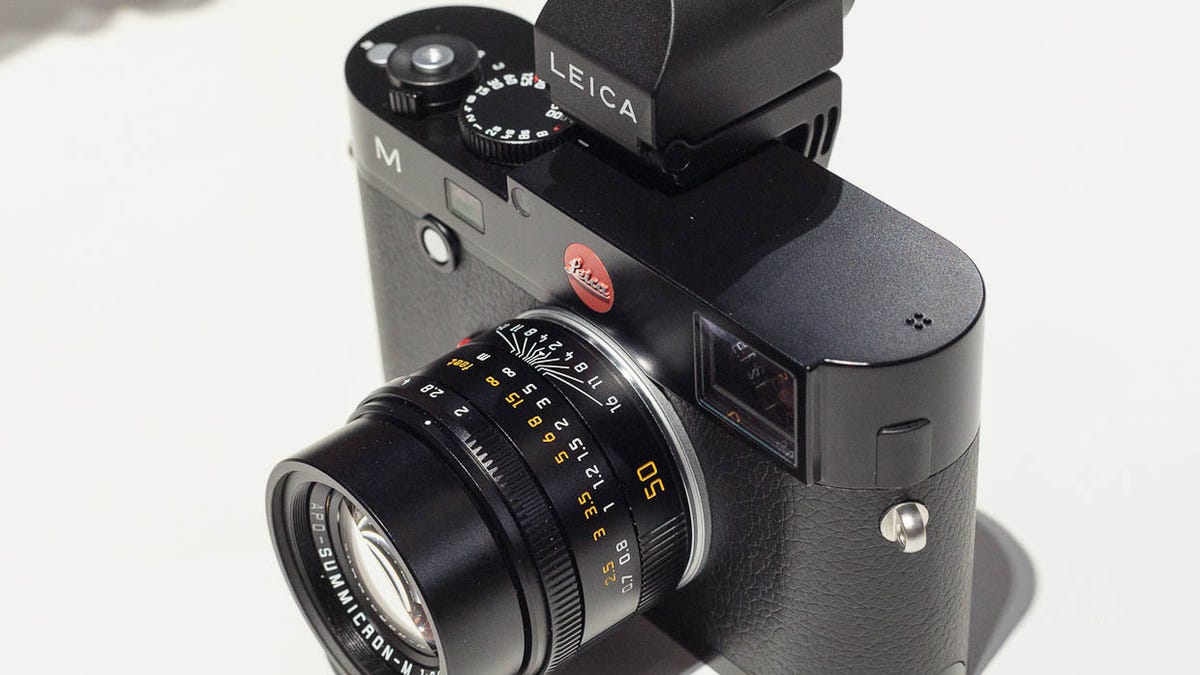Leica's new top-end rangefinder gets more electronic
Buying a Leica is more about brand cachet than high-performance electronics, but live view in the Leica M dramatically changes focusing. Also: a splashy X2 and an S with better image quality.
COLOGNE, Germany -- Leica may not have the mass-manufacturing clout of Samsung or the retail footprint of Canon or the electronics know-how of Sony. But the German camera maker has got one thing in spades: a brand.
And nowhere is that brand more obvious than at Photokina, the camera show that takes place every two years here in Germany, Leica's home turf. Canon and Nikon had bigger crowds, but the Leica had the better ratio of booth visitors to customers as it introduced a new top-end rangefinder camera with new electronic abilities, a lower-end rangefinder that's not quite as expensive, a splashy new compact camera, and a hulking new medium-format camera.
The company was there to show off a variety of new models. Leica rose to fame in the 1930s with compact cameras that took advantage of 35mm film, newly poached from the moving-pictures industry. These Leicas, rangefinder cameras with interchangeable lenses and very manual focusing, were favored for their ruggedness and precision.
That reputation has carried the company far -- and far out of the mainstream. Leicas, with their distinctive red-dot logo, are now premium products with big price tags of thousands of dollars.
Here's what the company introduced at Photokina, along with some slideshows so you can get a better look:
• The Leica M full-frame 24-megapixel rangefinder, the successor to the earlier M9, costs 6,200 euros in Europe and $6,950 in the United States. It for the first time gives Leica's rangefinders a live view option that can help electronically improve focusing that otherwise is a very manual operation.
Leica says it's "the M for photographers who do not wish to miss out on any of what modern digital technology has to offer," which is sort of funny given that modern digital technology also gives rival cameras highly sophisticated autofocus that still isn't available on a Leica M.
It's also got a 3-inch LCD display underneath Gorilla Glass, 1,080-pixel video abilities, an electronic viewfinder accessory, and an ISO range from 200 to 6,400. It comes with Adobe Systems' Lightroom for editing and cataloging photos. It's scheduled to ship in early 2013.
• The Leica S uses a supersize sensor of 45x30mm, a big notch up from the 36x24mm of the Leica M, and a resolution of 37.5 megapixels. It's also got a supersize price tag of 19,500 euros or $21,950 -- but that's not unexpected for medium-format photography given the expense of the large image sensors.
The Leica S feels more like a traditional SLR and has electronic autofocus for those who don't want to live the rangefinder lifestyle. Though the sensor is the same as the predecessor, the S2, it's got new electronics Leica says makes for better image quality. It'll also geotag photos.
The sensor has an ISO range of 100 to 1,600 and a dynamic range of 12 stops. It also comes with Lightroom.
• The Leica X2 Paul Smith Edition is the flamboyant model from Leica this year. It's a version of the earlier X2 that's been revamped by the British designer so it sports a green leather wrapping, a fluorescent yellow bottom, and an orange top with a whimsical lightbulb doodle signifying the pop-up flash location. The X2 Paul Smith costs 2,400 euros or $2,750, and only 1,500 of them will be built.
• The Leica M-E is very similar to the older Leica M9 rangefinder, but it drops a couple of features, such as a USB port. Its full-frame sensor has a resolution of 18 megapixels, and its price is 4,800 euros or $5,400.


